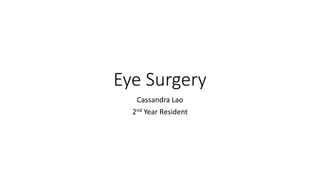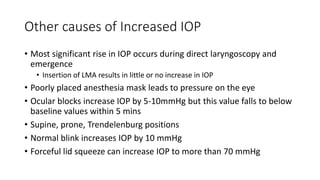A 39-year-old man presented with a left corneal perforation secondary to fungal keratitis. He underwent an emergency keratoplasty of the left eye under general anesthesia. His medical history included uncontrolled diabetes and a history of tuberculosis treatment. On examination, his left eye had mucopurulent discharge and hyperemic conjunctiva. For the surgery, he was given general anesthesia with an LMA to prevent increases in intraocular pressure that can occur with direct laryngoscopy and emergence. Prophylaxis for postoperative nausea and vomiting was also given due to the importance of preventing coughing and bucking in ocular surgery.























